Search Results for Tag: berlin
World’s climate savers to stop-over in Berlin
 A quick stop-over in the German capital is always worth it. Many participants of this year’s UN climate summit in neighbouring Poland are likely to do just that with the Dahrendorf Symposium taking place in Berlin on Thursday and Friday coinciding with the first week of the UN talks in Warsaw.
A quick stop-over in the German capital is always worth it. Many participants of this year’s UN climate summit in neighbouring Poland are likely to do just that with the Dahrendorf Symposium taking place in Berlin on Thursday and Friday coinciding with the first week of the UN talks in Warsaw.
 The Symposium strives to add fresh impetus to the ongoing climate negotiations asking how exactly Europe can keep spearheading the fight against climate change. Former Prime Ministers such as Italy’s Mario Monti or Ireleand’s Mary Robinson together with many other leading experts from academia, politics, and industry will be discussing how successful Europe really is in fighting climate change and the challenges lying ahead.
The Symposium strives to add fresh impetus to the ongoing climate negotiations asking how exactly Europe can keep spearheading the fight against climate change. Former Prime Ministers such as Italy’s Mario Monti or Ireleand’s Mary Robinson together with many other leading experts from academia, politics, and industry will be discussing how successful Europe really is in fighting climate change and the challenges lying ahead.
The Dahrendorf Symposium is a joint initiative of the Hertie School of Governance, the London School of Economics and Political Science as well as the German Mercator Foundation (Stiftung Mercator). The range of topics that will be discussed include:
- The reform of international negotiation standards and legal framework
- Europe’s strategy for climate protection after “Europe 2020”
- The potential of Europe’s cities as drivers of climate friendly behaviour
- New mechanisms of taxation and funding that could benefit economic growth as well as climate protection.
The Dahrendorf Symposium, which is hosted every two years, is taking place at Berlin’s Akademie der Künste on November 14 and 15. Founded in 2011 in the spirit of Lord Ralf Dahrendorf, the organizers say, it aims to challenge entrenched patterns of thought and argument on the future of Europe.
You can find further information about the Dahrendorf Symposium on the conference website and in the programme.
Watch a short introduction to the Dahrendorf Symposium in the conference’s very own trailer:
What’s it like to study sustainability?
Everyone talks about sustainability. But what’s it like to actually study the subject at university? And indeed, what does a university that teaches sustainable development look and feel like? Our reporter Laura Hennemann went to have a look at an unusual institution near Berlin.
Towering beech and spruce trees and plenty of clean, fresh air – that’s the first impression I get of the campus of the HNEE (Hochschule für Nachhaltige Entwicklung Eberswalde) or the University of Applied Sciences for Sustainable Development. It seems like the perfect setting for a university where students come to learn how to shape a more sustainable future.
The HNEE is located in the small town of Eberswalde, approximately 50 kilometres north-east of Berlin. It’s home to some 2,000 students who can choose from 16 different bachelor and master degree courses, among them forest information technology, marketing in organic agriculture and sustainable tourism management.
I’m curious about what kind of people a university of its kind draws. Do the students feel elitist given that they are studying to learn how to tackle some of the most pressing ecological problems of our time, studying to save the planet?
I meet Sina, Hanna and Fee, three young women studying international forest ecosystem management. They tell me that the students are a mixed bunch, ranging from iPhone owners, tree huggers to some rather extreme environmentalists. And it’s not just the students. The professors too have different mind-sets, they say.
The one thing the three agree on is that studying at the HNEE can change your outlook. There are frequent discussions on the environment and a course on sustainability is compulsory for everyone in the first semester. Also, it’s the little details which affect the students, they tell me.
I had noticed them myself when wandering around the campus. The building’s energy performance certificate is pinned prominently on a noticeboard at the entrance. There are waste bins in each room, consisting of three bright-coloured parts for easy waste separation. And of course, the printers and photocopiers use recycled paper. Another, probably unrelated, detail caught my eye – Both the ladies’ and the men’s toilet has a diaper-changing area. I secretly enjoy such progressive thinking.
But it’s much more than such small details. The students tell me that the campus is powered by energy from a green electricity provider. Some buildings even have their own photovoltaic systems. And all the food at the canteen is organic. The environment certainly does make every student a little more ecologically inclined, the students tell me, regardless of your attitude when when you started
I go on to the second campus of the HNEE in the town center where I meet Vera Luthardt. She is a professor at the faculty of landscape management and nature conservation and proud of the new name the HNEE gave itself: “To be very honest, I was almost surprised that implementing the term “sustainability” got a majority in 2010,” she says. And even more importantly, Luthardt adds, was the subtitle when the new name was announced: “Our name reflects our mission.”
Luthardt’s own research focuses on bog landscapes. Among other things, she and her colleagues are currently investigating how the re-wetting of ecologically damaged bogs might bind CO2.
And it’s not just young students that the HNEE is targetting. In addition to the bachelor’s and master’s degree courses, the university also offers an extra distance learning degree for working professionals in the corporate sector. It’s called strategic sustainability management.
“We cannot wait another entire generation for a rethink to take place,” Luthardt says. She has been teaching at the HNEE since 1993 and is proud to be working at a university which sets itself apart from the rest.
The tricky job of hammering out a climate wishlist
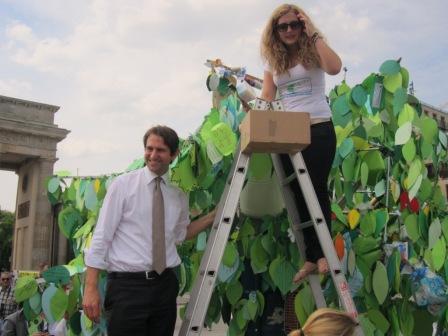 The first World Youth Sustainability concluded in Berlin recently. It brought together over 150 young people from 31 countries who met policymakers and experts to talk about how their dream of a more sustainable, equitable world could be realized. Two young participants, Anne-Sophie Risse and Teresa Thalmaier, describe their experiences at the tightly-packed summit.
The first World Youth Sustainability concluded in Berlin recently. It brought together over 150 young people from 31 countries who met policymakers and experts to talk about how their dream of a more sustainable, equitable world could be realized. Two young participants, Anne-Sophie Risse and Teresa Thalmaier, describe their experiences at the tightly-packed summit.
Anne-Sophie Risse, youthinkgreen-Team Osnabrück:
Friday, May 17 – Day seven of our first World Youth Sustainability Summit. Off to an early start – my alarm rings at 6 a.m. It’s not so unusual really since I get up at that hour anyway during a normal school week. But yesterday was a long day. We spent the whole day at the Pariser Platz in central Berlin for our Tree of Hope project. It’s made of trash and has pages bearing the wishes, demands, hopes and requests from us and from other people addressed to lawmakers, governments and people around the world.
Now, early Friday morning, it’s our job to hand over the Tree of Hope to German Environment Minister Peter Altmaier. We – that is 160 young people from 31 countries – arrive at the ministry at 8 a.m. We’d come together in Berlin to draft a document expressing what we want to policymakers, business and society. Our meeting with Altmaier lasts just 15 minutes.
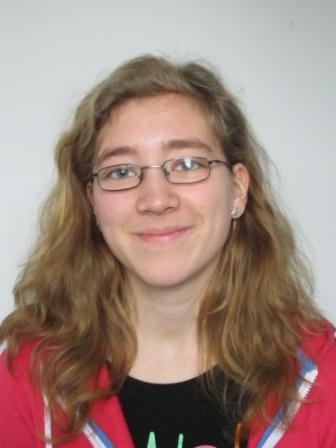 In order to get a solid understanding of some of the issues that made it into the document, we’ve been listening to daily talks by various experts on climate change and other topics. Today, it’s the turn of renowned climate researcher Hans Joachim Schellnhuber. We head to the Potsdam Institute for Climate Impact Research to hear him speak. He’s very competent and understanding and begins his talk by saying “I’ll wake you up when something important comes up!” In addition to several interesting facts on climate change, I take away this impression from the talk – if there’s an acute, common problem then even nations that are sworn enemies can manage to work together.
In order to get a solid understanding of some of the issues that made it into the document, we’ve been listening to daily talks by various experts on climate change and other topics. Today, it’s the turn of renowned climate researcher Hans Joachim Schellnhuber. We head to the Potsdam Institute for Climate Impact Research to hear him speak. He’s very competent and understanding and begins his talk by saying “I’ll wake you up when something important comes up!” In addition to several interesting facts on climate change, I take away this impression from the talk – if there’s an acute, common problem then even nations that are sworn enemies can manage to work together.
I wonder if things have to go that far. With that thought, we head to the next workshop “Climate change – an intergenerational problem.” Carl-Friedrich Schleußner is the expert in this case and says that people need to live in such a way so that life for successive generations is at least just as good. It’s a topic you can discuss forever. So that the day doesn’t end on too theoretical a note, we’re shown videos by the “ClimateMediaFactory.org” – the world as a user of a network dubbed “Earthbook.” The videos were really well done.
Teresa Thalmaier, youthinkgreen-Team Windhoek:
After absorbing so many new impressions, faces, fascinating lectures and different cultures, we headed to the Konrad Adenauer Foundation.
“If you thought the last few days were grueling, then you’d better get prepared for something really tough today. But that’s what you’ll take home with you, something you can be proud of.” That’s how Helmut Spiering, the project founder of youthinkgreen, welcomed us.
Another two long hours to go before lunch. Initially, we sat in groups of maximum ten young people and racked our brains – what do we actually want? What needs to change? How can we shape our world in a more sustainable manner? How can you achieve that aim?
It sounds easier than it is. How do you formulate things that are politically correct and still compelling? But we weren’t the only ones struggling with the problem. After another discussion in a smaller circle, further groups were created. Now four larger with 40 members each worked on their wish lists. Exhausted, we dragged ourselves off to lunch to recharge our batteries. We all really needed it!
But the tough part was still to come. We were asked to discuss the four wish lists from all the groups and to combine then. We – 160 young people from 31 countries – sat excitedly in a large conference room. There were so many different cultures and languages represented. But all that wasn’t meant to hinder us.
The most difficult part often was formulating the document. Often, our statements weren’t concrete enough, at times superfluous – though there were really good ideas behind them. We gained a deep insight into how a parliament works, how politics is done on an international stage. At the end, we had our final document. It’s unbelievable what we achieved in the last weeks and I’m happy to be a part of the youthinkgreen family!
A Song, a Dance and Spots on the Fight Against Climate Change
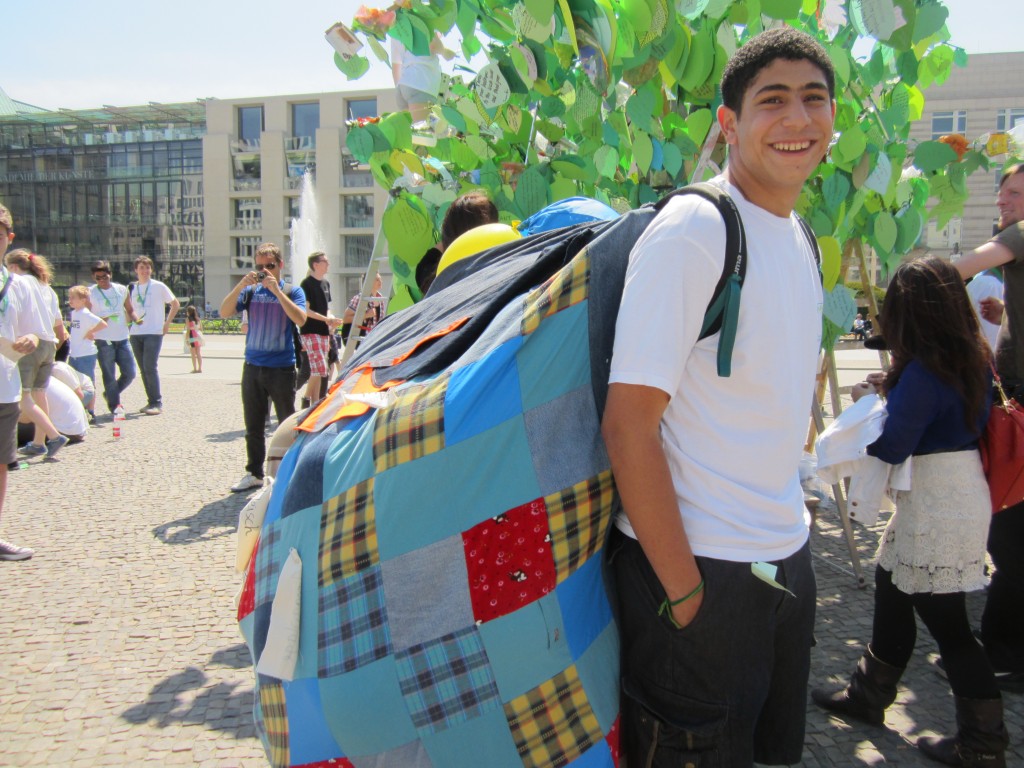 Yesterday, the colossal efforts each and every one of us put in the project came to fruition as the pinnacle of our project, the 1st world youth sustainability summit, came to be.
Yesterday, the colossal efforts each and every one of us put in the project came to fruition as the pinnacle of our project, the 1st world youth sustainability summit, came to be.
The event, many of whose attendees were project managers and leading figures in their respective fields, were pleasantly surprised as the youthinkgreen teams that took part in the gala showed discipline, determination and that they were not to be discouraged by the sheer size and importance of the event at hand.
The program, whose highlights were the youthinkgreen rendition of the song ,,Mut zum Handeln” (courage to act), the various student-produced environmentally oriented spots, and the Indian dance showed the unique inter-cultural connection between the various members of the Youthinkgreen.
The excitement at the event rubbed off on each and every one of our guests, with many of them on the verge of euphoria. We were standing hand-in-hand with people whose success has come to be known on every continent of the planet and watched in amazement as they relaxed and spoke to us as peers, not as minors, as friends not as climate change fighters.
All in all, to simply call our summit a success would be an understatement. The Allianz Forum will forever in our hearts be remembered as the place where we graduated into adults, supported along our journey by the constant recognition we received throughout the process.
Written by Mourad Farahat, youthinkgreen Kairo
Handing over the „Tree of Hope“
 The „Tree of Hope“ had a long and fruitful journey. First we planet it at the climate summit in Doha in December 2012. And now it grew at the 1st World Youth Sustainability Summit 2013 in Berlin. The tree is actually not a real tree. It’s trunk is made from garbage and the crown from green paper leafs filled with the wishes, demands and ideas of people from all over the world.
The „Tree of Hope“ had a long and fruitful journey. First we planet it at the climate summit in Doha in December 2012. And now it grew at the 1st World Youth Sustainability Summit 2013 in Berlin. The tree is actually not a real tree. It’s trunk is made from garbage and the crown from green paper leafs filled with the wishes, demands and ideas of people from all over the world.
It’s a beautiful and complex tree, meant to be a demand against mankinds extravagantly and unecological lifestyle. People should see the tree, read the leafs and think about their own daily routines. All 160 participants of the Youth Sustainability Summit collected the wishes and demands from friends and siblings in the 31 countries they call home. The tree grew upto 4 meters yesterday at the Brandenburg Gate in the centre of Berlin. And it grew more leafs as citizens and tourists also started to write on leafs.
 Besides the „Tree of Hope“ we used a 10qm blanket to illustrate the ecological foot- and hand-print everybody has. The foot-print depends on the way people live and how they consume things. The hand-print shows that it’s possible to fight against climate change. So we asked people to leave a colourfull print of feed and hands on the white blanket. The action was a success, it ended with a gala at the Allianzforum (Read the post by Mourad Farahat) where a nice breeze shook the leafs of the trees.
Besides the „Tree of Hope“ we used a 10qm blanket to illustrate the ecological foot- and hand-print everybody has. The foot-print depends on the way people live and how they consume things. The hand-print shows that it’s possible to fight against climate change. So we asked people to leave a colourfull print of feed and hands on the white blanket. The action was a success, it ended with a gala at the Allianzforum (Read the post by Mourad Farahat) where a nice breeze shook the leafs of the trees.
The leafs are filled with all kinds of demands, as you can see on the pictures. The ideas and wishes very much depend on where the writer comes from. You can imagine that a person from a developing countries shares quite different hopes as someone from a industrialized country.
We hope that all our wishes and demands will come true. That’s more than important to leave our children and grandchildren a world that is worth living. The way we live today destroys the future. I personally want to live in a world where nature has a more important role again and not only profit. I wish for more green spaces in cities, more room for bicycles and children to play. The „Tree of Hope“ is now in the hands of the German Environmental Minister Peter Altmaier. We hope for results.
Written by Anke Britta Schmidt, youthinkgreen Osnabrück /ke




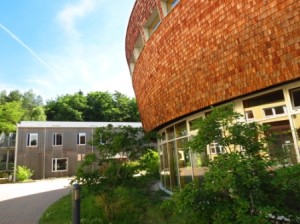
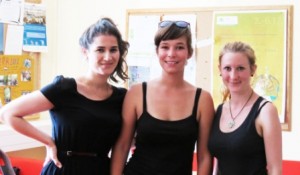

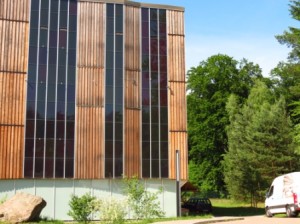




Feedback